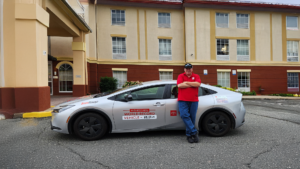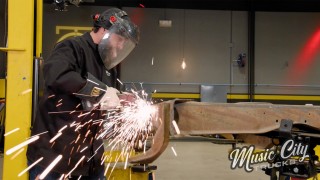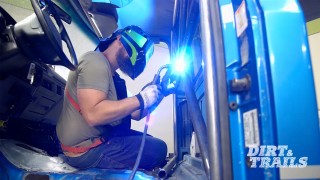5 Game-Changing AI Innovations That Are Revolutionizing Traffic and Cutting Emissions

Imagine cruising through city streets, guided by AI, hitting green light after green light with barely a stop in sight. Not only does this make for a smoother, less stressful drive, but it also means less pollution spewing into the air. This isn’t a futuristic fantasy; it’s happening right now in cities like Boston and Seattle, thanks to Google’s groundbreaking initiative, Project Green Light.
Table of Contents
The Problem: Urban Traffic and Its Environmental Toll
Traffic congestion is more than just an inconvenience. It’s a major contributor to greenhouse gas emissions, particularly in urban areas. Intersections are hotspots for pollution, with emissions at these choke points reaching up to 29 times higher than on open roads. Much of this pollution comes from vehicles accelerating after a stop—a common occurrence at traffic lights. In the United States, where transportation is the largest source of carbon pollution, finding ways to reduce emissions is critical for addressing climate change.
That’s where Project Green Light comes in. By leveraging artificial intelligence (AI) and Google Maps’ vast database of driving trends, this initiative is helping cities optimize traffic light timing to reduce stop-and-go traffic, ultimately cutting emissions and improving urban mobility.
Boston: The Beantown Breakthrough
Boston, notorious for its traffic woes, is at the forefront of this AI-driven revolution. The city partnered with Google to implement Project Green Light, and the results have been nothing short of impressive. In early tests at key intersections, such as Huntington Avenue and Opera Place, the initiative reduced stop-and-go traffic by over 50%. This is a game-changer in a city where drivers lose an average of 42 hours each year stuck in traffic.
Jascha Franklin-Hodge, Boston’s Chief of Streets, highlighted the significance of this partnership: “The system provides our traffic engineers with crucial data to tweak signals by just a few seconds, which can have a substantial impact on reducing congestion along key corridors.” This isn’t just about making commutes quicker—it’s about making Boston a healthier, more livable city. Reducing stop-and-go traffic doesn’t just ease driver frustration; it also cuts emissions by reducing the amount of time cars spend idling at red lights.
Seattle: Pioneers in the Pacific Northwest
Seattle was the first U.S. city to pilot Project Green Light, and its success has set a precedent for other cities to follow. In Seattle, small adjustments made by AI—such as shifting the timing of traffic lights by just a few seconds—have already led to a 10% reduction in emissions at tested intersections. The city’s Department of Transportation has embraced the project, with traffic engineers able to implement Google’s recommendations in as little as five minutes.
Laura Wojcicki, an engineer at Seattle’s Department of Transportation, described the process: “We had one case where we moved four seconds from a north-south street to an east-west street at a particular time of day. That small shift helped reduce stop-and-go traffic significantly.” The impact of these minor adjustments is profound, proving that AI can make a tangible difference in urban traffic management and environmental sustainability.
The Role of AI in Urban Transformation
What makes Project Green Light so effective is its use of AI to analyze traffic patterns and recommend precise changes to traffic light timing. Unlike traditional methods, which require costly hardware installations or manual vehicle counts, this system relies on existing data from Google Maps. This not only makes it more affordable but also more scalable, allowing cities to optimize their traffic systems without the need for significant infrastructure changes.

The AI behind Project Green Light creates models that understand typical traffic flow through intersections, including how traffic patterns change throughout the day. It then generates actionable recommendations for traffic engineers, who can review and implement these changes quickly. The system’s user-friendly interface ensures that cities can easily monitor and adjust their traffic light settings as needed, maximizing the program’s effectiveness.
- Optimizing Traffic Light Timing: AI analyzes traffic patterns and fine-tunes signal timings, reducing stop-and-go traffic and its associated emissions.
- Reducing Stop-and-Go Traffic: By minimizing the frequent stops and starts at intersections, the system helps lower the emissions that occur when vehicles accelerate after stopping.
- Improving Traffic Flow: AI coordinates traffic lights across adjacent intersections, creating “green waves” that allow smoother, uninterrupted travel through city streets.
- Cutting Emissions Efficiently: Early results show up to a 10% reduction in greenhouse gas emissions, making a meaningful impact on urban air quality.
- Scalable Implementation: The system is easy to implement and scale, allowing cities to optimize multiple intersections without the need for costly new infrastructure.
Looking Ahead: The Future of AI in U.S. Cities
As Boston and Seattle demonstrate, Project Green Light is more than just a tech experiment—it’s a practical solution to real-world problems. With the initiative already active in over 70 intersections across 13 cities globally, and with plans to expand to hundreds of cities and tens of thousands of intersections in the coming years, the potential for widespread impact is enormous.
For U.S. cities grappling with traffic congestion and pollution, Project Green Light offers a way forward. By using AI to optimize traffic flow, cities can reduce emissions, improve air quality, and make urban environments more sustainable. As more cities adopt this technology, the benefits will only grow, creating a greener, more efficient future for all.









